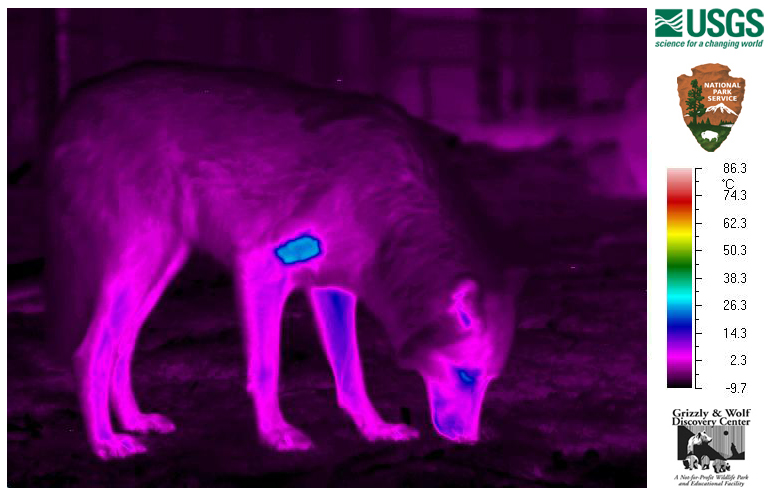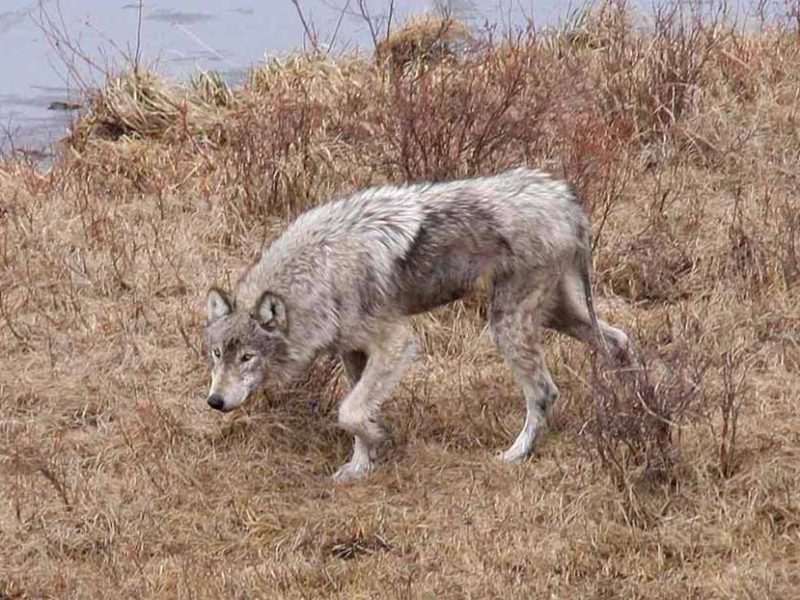A high-tech method for detecting disease in domestic cattle is helping researchers in Yellowstone National Park learn more about how sarcoptic mange effects gray wolf survival and behavior during the park’s long, cold winters.
For Paul Cross, a wildlife biologist with the U.S. Geological Survey, a moment of insight came when he learned how thermal imaging was used in the cattle industry to detect cows infected with foot-and-mouth disease.
The heat-sensitive cameras can pick up on the heat caused by related inflammation in a cow’s hoof within a day or two of contracting the disease.
Heat-sensing videocameras could help show the metabolic costs of mange in specific wolves, Ross realized.


